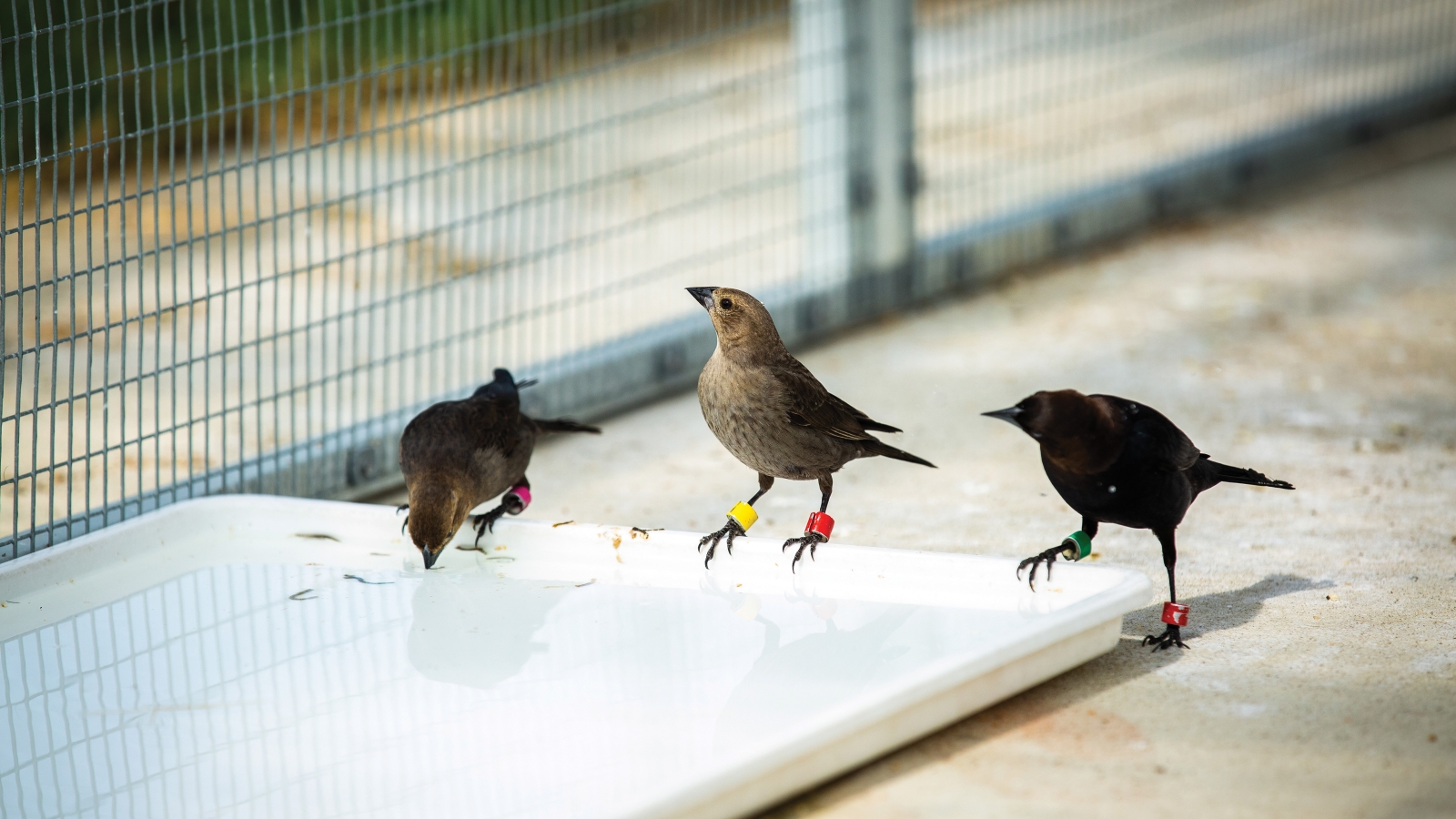In the highly social world of brown-headed cowbirds, a migratory species native to the Great Plains of North America, every song, sound, and pose has a meaning—especially during mating season. These behaviors represent a complex and metabolically costly social behavior formed by millions of years of evolution, and they also provide researchers an opportunity to explore the neural circuits that drive communication in social animals.
This summer, Julia Youngman, C’24, and Eric Tao, C’25, studied the brains and behavior of cowbirds as part of the Penn Undergraduate Research Mentoring Program (PURM). The two have pursued their summer investigations under the guidance of Marc Schmidt, Professor of Biology. They worked in Schmidt’s “smart” aviary, an enclosure filled with cameras and microphones that track every movement, song, and social interaction of the birds inside it. Schmidt uses this smart aviary to study a neural circuit in cowbirds called the song pathway.
The end goal of the smart aviary is to set up an “automated pipeline” of behavioral data, says Schmidt. While researchers currently must annotate all footage and recordings from the aviary by hand, they hope to build a program that can track the birds automatically using machine learning. During the summer, Tao used his mathematics background to help build an audio component for the automated pipeline. The program he’s working on will use data from all 24 microphones to localize and identify different types of songs from the cowbirds.
Youngman, on the other hand, is employing her biology skills to work directly with the flock. After learning about the neuroanatomy of the birds, she’s had the opportunity to assist in surgeries, dissections, and electrophysiological recordings. Youngman’s research aims to elucidate the purpose of the female cowbird song pathway. By stimulating nerve cells and injecting molecular tracers that expose the trajectory of neurons, Youngman and Schmidt have found that while the female cowbird doesn’t use the song pathway to sing like male cowbirds do, it still plays a key role in reproductive behaviors.
By combining the behavioral techniques of the smart aviary and the traditional biological techniques of the lab, Schmidt and his undergraduate researchers are helping pioneer how the neural bases of complex social behaviors are studied. “We are going to push the limits of some of the technical mathematical tools that are used to study groups of animals,” says Schmidt.
Image: Through the Penn Undergraduate Research Mentoring program, undergraduates Julia Youngman and Eric Tao studied the mating songs of brown-headed cowbirds like those above in Penn’s “smart” aviary. (Scott Spitzer, University Communications)




